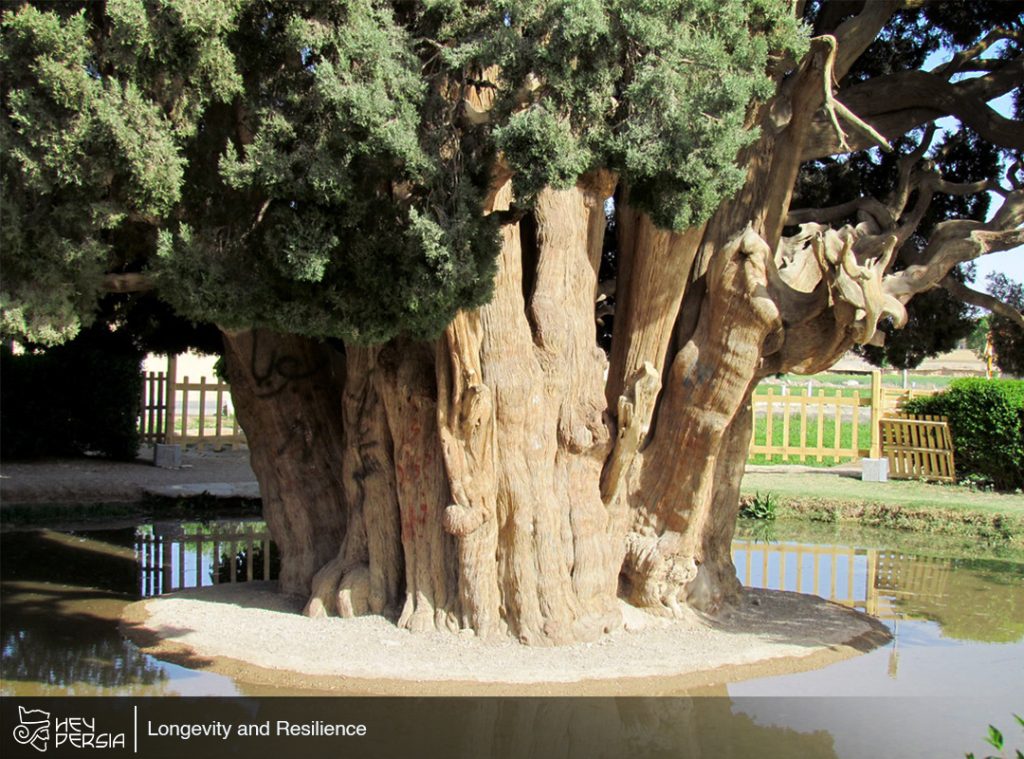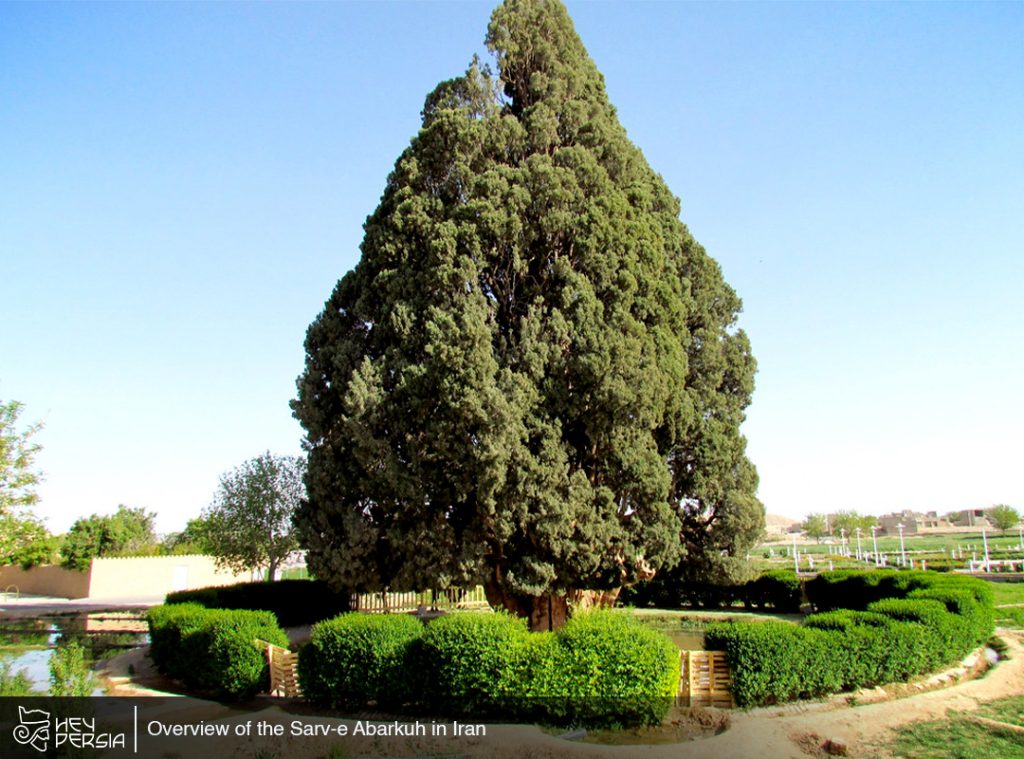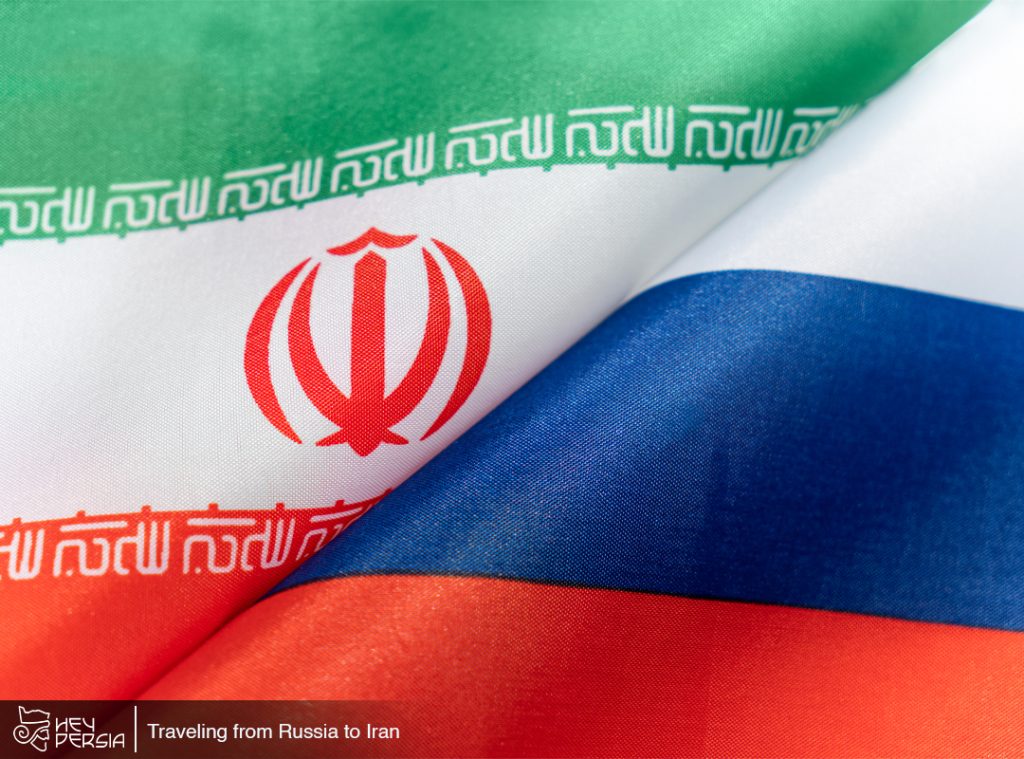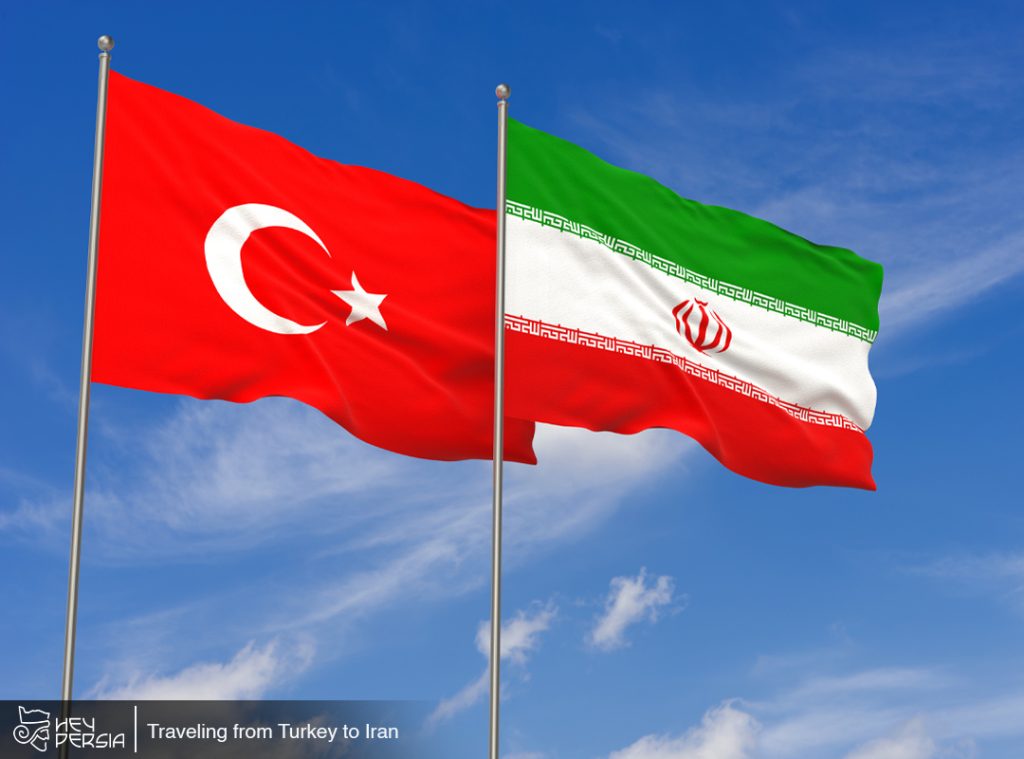Generally, The Sarv-e Abarkuh, scientifically known as Cupressus sempervirens var. horizontalis, holds a revered place in Iranian culture and landscape. This ancient tree species, native to the region, is famous for its longevity, resilience, and cultural significance. Let’s explore the history, characteristics, and cultural importance of the Sarv-e Abarkuh in Iran. Learn more at Hey Persia.
Historical Legacy of The Sarv-e Abarkuh in Iran
Additionally, The Sarv-e Abarkuh has deep roots in Iran’s history, dating back thousands of years. Famous for its striking appearance and enduring presence, this iconic tree species has revered by various civilizations that have inhabited the region. Moreover, From ancient Persian poets and philosophers to modern-day Iranians, the Sarv-e Abarkuh holds a special place in the collective consciousness of the nation.
Longevity and Resilience of The Sarv-e Abarkuh in Iran
One of the most remarkable features of the Sarv-e Abarkuh is its exceptional longevity and resilience. Some specimens of this species are estimated to be over 2,000 years old, making them among the oldest living organisms on Earth. Despite facing numerous challenges over the centuries, including environmental changes and human encroachment, the Sarv-e Abarkuh continues to thrive in select regions of Iran.

Iconic Symbolism
The Sarv-e Abarkuh holds symbolic significance in Iranian culture, representing endurance, strength, and immortality. Often depicted in art, literature, and poetry, this majestic tree symbolizes the enduring spirit of the Iranian people and their connection to the land. Its distinctive silhouette, with its slender trunk and conical crown, has become synonymous with the Iranian landscape.
Cultural References
Throughout history, the Sarv-e Abarkuh has referenced in Persian literature, mythology, and folklore. In classical Persian poetry, the tree is for its beauty and resilience, serving as a metaphor for human virtues and aspirations. In Persian mythology, the Sarv-e Abarkuh is sometimes associated with mystical and spiritual themes, embodying notions of wisdom, protection, and transcendence. At Hey Persia you can also find tours such as Persian Culture in order to discover more.
Environmental Significance
Beyond its cultural importance, the Sarv-e Abarkuh plays a vital role in Iran’s ecosystem and environmental heritage. As a native tree species, it contributes to biodiversity and habitat conservation, providing shelter and sustenance for various wildlife species. Additionally, the dense foliage of the Sarv-e Abarkuh helps mitigate soil erosion and stabilize fragile landscapes, making it an essential component of Iran’s natural heritage.
Conservation Efforts
Given its cultural and ecological significance, efforts are underway to conserve and protect the Sarv-e Abarkuh in Iran. Conservation organizations, government agencies, and environmentalists are collaborating to safeguard existing populations of this iconic tree species. They promote sustainable management practices. Generally, These efforts include habitat restoration, reforestation initiatives, and public awareness campaigns to raise appreciation for the Sarv-e Abarkuh and its ecological importance.
Tourism and Sightseeing
For visitors to Iran, the Sarv-e Abarkuh offers a unique opportunity to connect with the country’s rich culture. Several notable sites in Iran are home to ancient specimens of the Sarv-e Abarkuh, including historical gardens, parks, and protected natural areas. Tourists and nature enthusiasts can explore these sites, marveling at the beauty and longevity of these iconic trees. By immersing themselves in Iran’s cultural and environmental legacy.

The Sarv-e Abarkuh in Iran
Finally, In conclusion, the Sarv-e Abarkuh stands as a symbol of cultural heritage, environmental stewardship, and natural beauty in Iran. With its ancient lineage, iconic symbolism, and ecological significance, this majestic tree species continues to inspire awe. Additionally, Reverence among Iranians and visitors alike. As efforts to conserve and protect the Sarv-e Abarkuh continue, its legacy as a timeless symbol of endurance and resilience will endure for generations to come.





